The additional utility obtained from consuming an extra unit of a good is called:
A. marginal utility.
B. marginal rate of substitution.
C. disutility.
D. population-averaged utility
A
Carleton is presented with two bundles of goods: silk ties and cufflinks. Which of the following statements satisfies the assumption of rankability (completeness)?
I. Carleton prefers silk ties to cufflinks.
II. Carleton prefers cufflinks to silk ties.
III. Carleton is equally satisfied with either silk ties or cufflinks.
A. I only
B. II only
C. I or II
D. I, II, or III
D
Maggie prefers cheese to crayons, and she prefers crayons to coconuts. To satisfy the assumption of ______, Maggie must also prefer ______.
A. rankability; cheese to coconuts
B. transitivity; cheese to coconuts
C. transitivity; coconuts to cheese
D. rankability; coconuts to cheese
B
An indifference curve depicts:
A. all combinations of goods which are of equal cost to the consumer
B. all combinations of goods which provide the consumer the same utility
C. all combinations of goods which are just affordable for the consumer
D. all combinations of goods which provide the consumer the same marginal rate of substitution
B
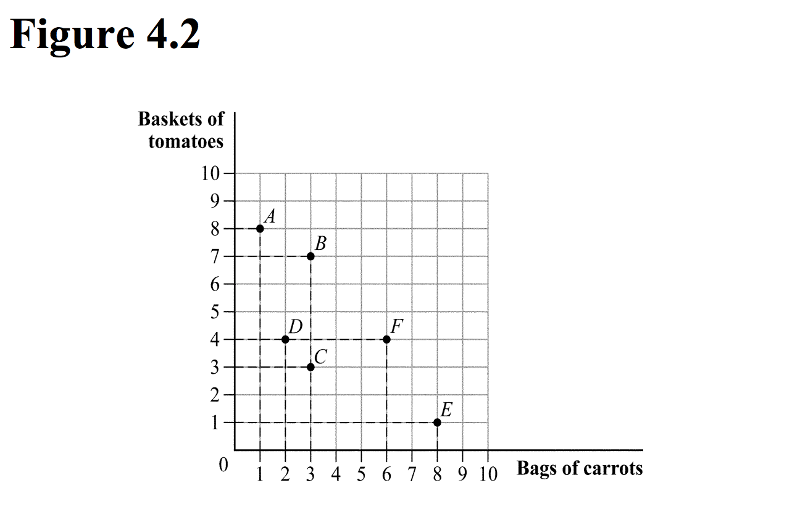
(Figure 4.2) Joanne's utility function is U = TC, where T is baskets of tomatoes and C is bags of carrots. One of Joanne's indifference curves will go through points:
A. A, B, and F.
B. B, D, and E.
C. A, D, and E.
D. D, C, and E.
C
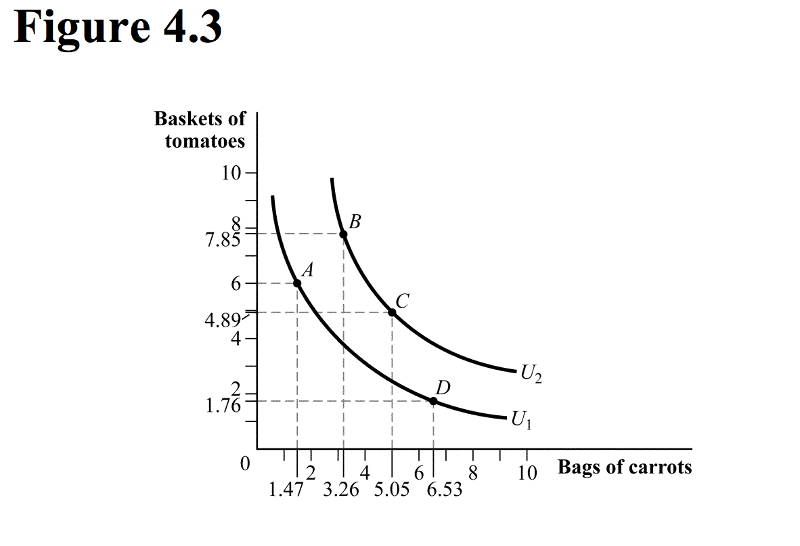
(Figure 4.3) Which of the following statements is FALSE?
A. Indifference curve U2 provides a higher level of utility than indifference curve U1.
B. Bundle C is preferred to bundle D.
C. Bundle A is preferred to bundle C.
D. The consumer is indifferent between bundle A and bundle D.
C
The marginal rate of substitution (MRS) is:
A. the (negative of the) slope of the budget constraint
B. the amount of good Y an individual must give up so as to be able to afford an additional unit of good X
C. the (negative of the) slope of an indifference curve
D. both b and c e. both a and b
C
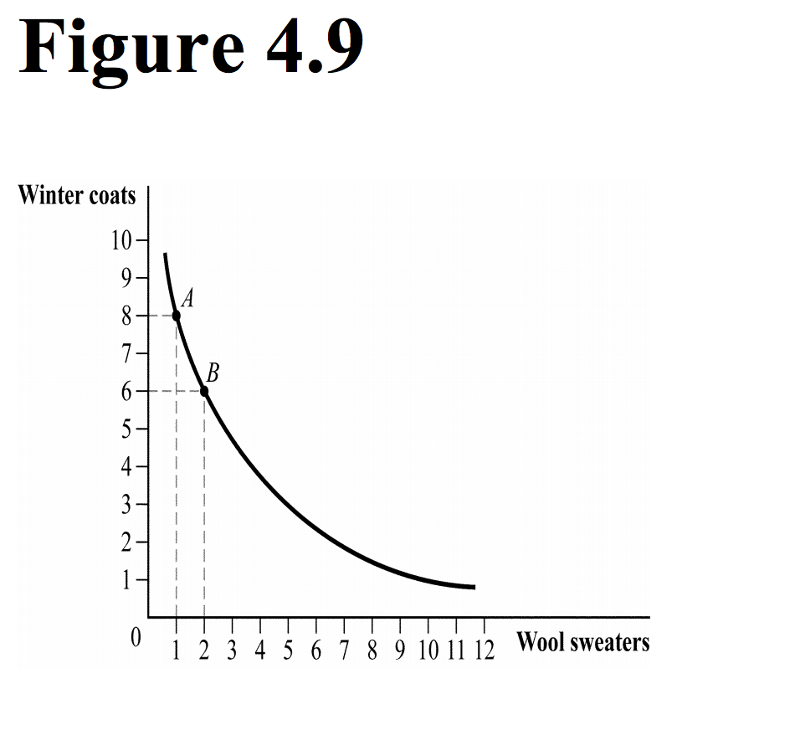
(Figure 4.9) What is the marginal rate of substitution between points A and B?
A. 4
B. 6
C. 2
D. 8
C
Fisher's utility function for trout (T) and salmon (S) is given by U = ST. Which set of consumption bundles lies on the same indifference curve?
A. (S = 2 and T = 4) and (S = 3 and T = 3)
B. (S = 5 and T = 5) and (S = 25 and T = 1)
C. (S = 10 and T = 2) and (S = 5 and T = 1)
D. (S = 8 and T = 6) and (S = 7 and T = 10)
B
For Janie, one pencil is a perfect substitute for one pen no matter how many pens or pencils she has. Her marginal rate of substitution of pens for pencils is therefore:
A. constant and equal to one
B. constant and greater than one
C. constant and equal to zero
D. not defined
A
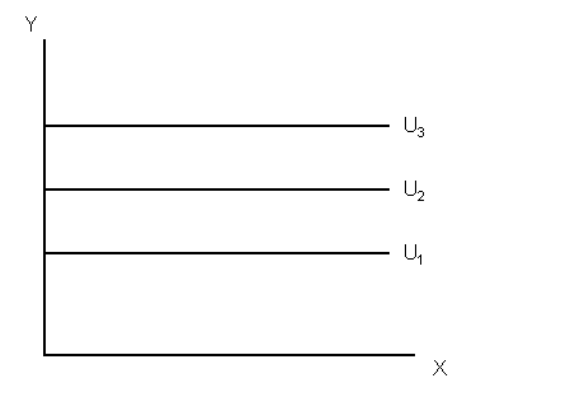
The figure above shows several of an individual’s indifference curves for goods X and Y. Which of the following can be deduced from the figure?
A. good X is a useless good
B. good Y is a useless good
C. goods X and Y are perfect substitutes
D. goods X and Y are perfect complements
A
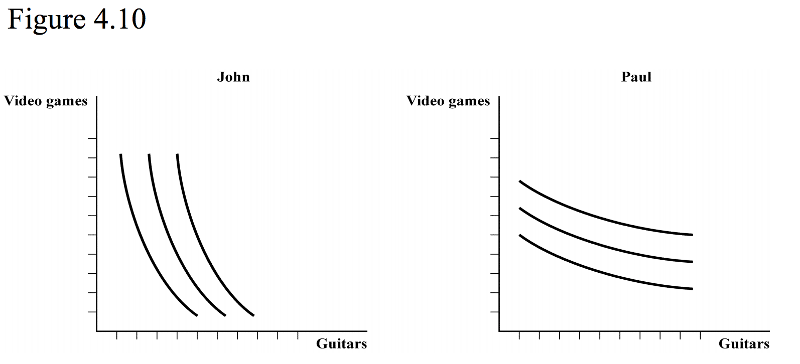
(Figure 4.10) ________ is willing to give up a lot guitars for a small number of video games, while _______ is willing to give up a lot of video games for a small number of guitars.
A. John; Paul
B. Paul; John
C. Paul; Paul
D. John; John
B
A graph of the utility function U = 4Y + X would reveal that goods X and Y are:
A. perfect substitutes.
B. near substitutes.
C. perfect complements.
D. near complements.
A
Beth has $200 of income to spend on ebooks (E), priced at $10 per book, and Zumba (Z) classes, priced at $8 per class. Which of the following consumption bundles is infeasible?
A. E = 20 and Z = 0
B. E = 2 and Z = 22
C. E = 10 and Z =13
D. E = 8 and Z =15
C
Consider Molly’s budget constraint for pizza slices and sodas. Each week, Molly has $12 to spend on pizza slices and sodas. The price of a slice of pizza is $2.00 and the price of a soda is $1.00. If pizza (slices) is the good on the X-axis, then which of the following statements is correct?
A. the slope of Molly’s budget constraint is -2 and the Y-axis intercept is equal to 12
B. the slope of Molly’s budget constraint is -½ and the Y-axis intercept is equal to 12
C. the slope of Molly’s budget constraint is -2 and the Y-axis intercept is equal to 6
D. the slope of Molly’s budget constraint is -½ and the Y-axis intercept is equal to 6
A
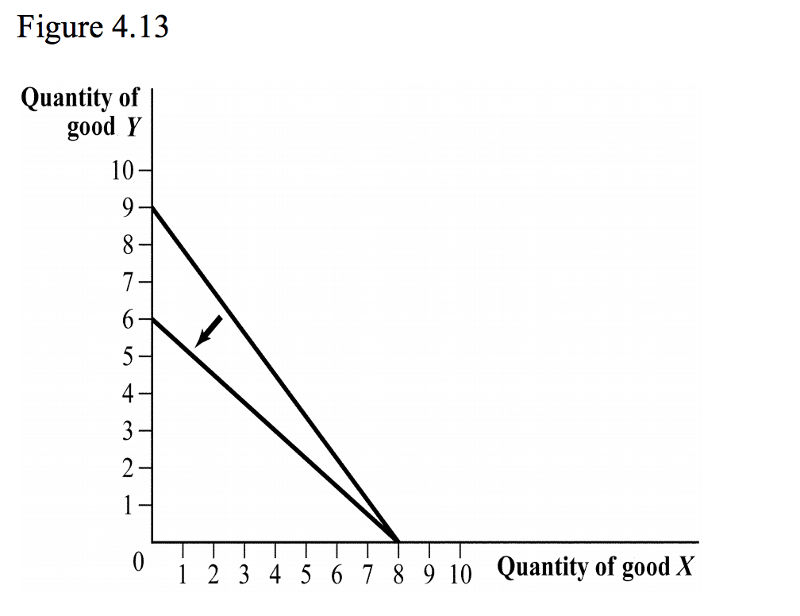
(Figure 4.13) What caused the budget constraint to rotate?
A. an increase in the price of good X
B. a decrease in the price of good Y
C. a decrease in income
D. an increase in the price of good Y
D
Suppose a consumer’s income doubles, as do the prices of both the X and Y goods. As a result, the consumer’s budget constraint:
A. shifts outward and becomes steeper
B. shifts outward and becomes flatter
C. shifts outward in a parallel fashion
D. remains unchanged
D
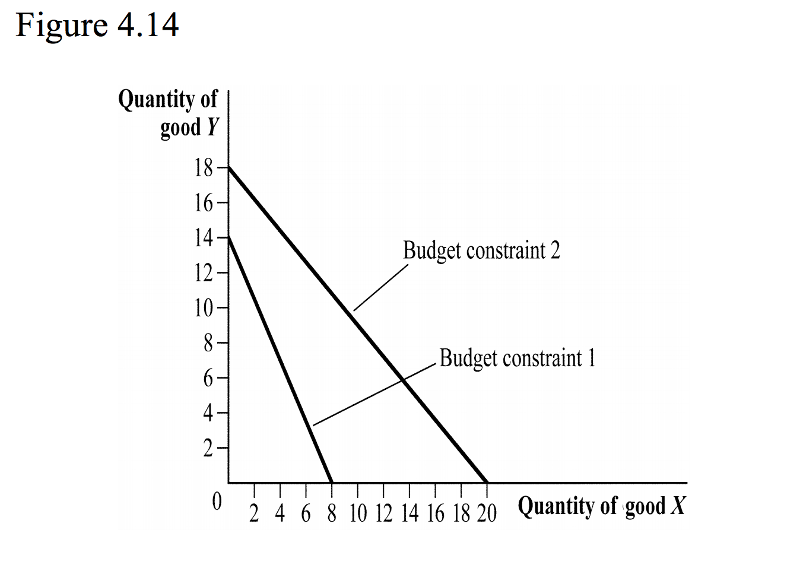
(Figure 4.14) For Budget constraint 1, the price of good X and the price of good Y could equal ________, respectively.
A. $175 and $100
B. $80 and $140
C. $140 and $160
D. $6 and $4
A
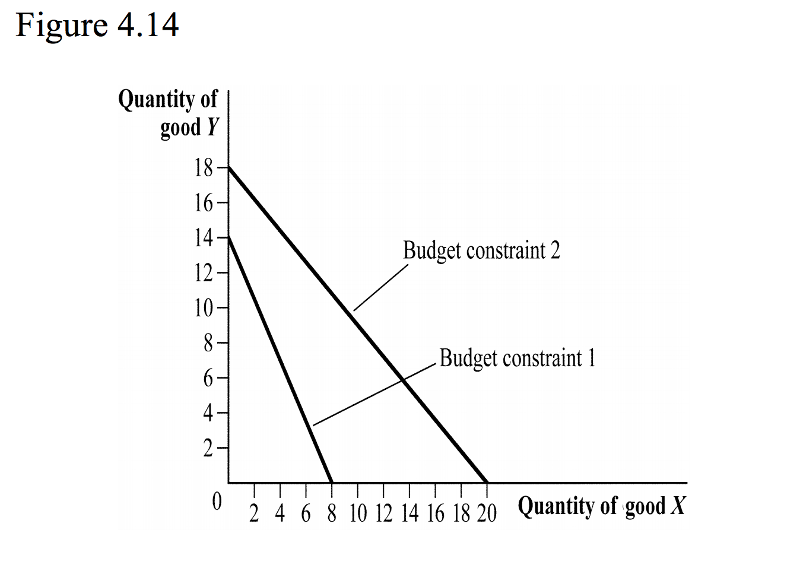
(Figure 4.14) For Budget constraint 2, if the price of good Y is $90 per unit, what is the price of good X?
A. $92
B. $88
C. $81
D. $102.24
C
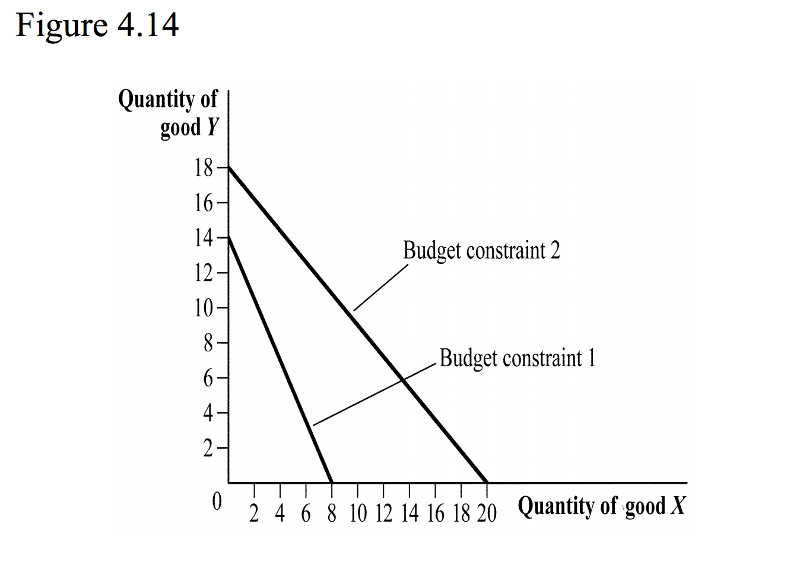
(Figure 4.14) What could have cause the budget constraint to shift from BC2 to BC1?
A. a decrease in income
B. a decrease in the price of good X
C. a decrease in income and an increase in the relative price of good X compared to good Y
D. an increase in the relative price of good X to that of good Y
C
When indifference curves are typically shaped, the point of utility maximization occurs where:
A. the MRS of X for Y is equal to PY/ PX
B. the MRS of X for Y is equal to PX/ PY
C. the indifference curve is tangent to the budget constraint
D. both b and c
E. both a and c
D
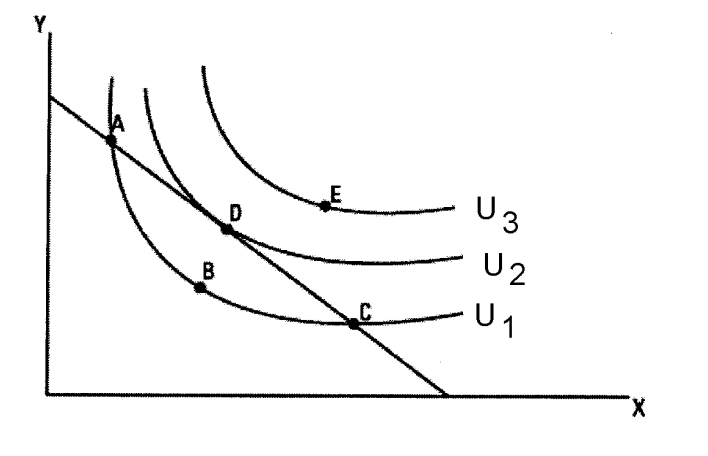
The figure above represents Sarah’s budget constraint and three of her indifference curves. Which of the following statements is/are INCORRECT?
A. at bundle D, Sarah’s marginal rate of substitution of X for Y is equal to PX/ PY
B. Sarah would be spending less than her full income on bundle B, exactly her full income on bundles A, D, and C, while bundle E is not affordable for her.
C. Sarah’s optimal consumption bundle is bundle D
D. Sarah prefers bundle D to either bundle A or bundle C, and she prefers either bundle A or bundle C to bundle B
E. both a and b
D
THINK!! Jimmy spends his entire income on carrots and cookies. At his optimal consumption bundle, he would consume positive amounts of both goods. At his CURRENT consumption bundle, Jimmy’s MRS of cookies for carrots (the amount of carrots he’s willing to give up to obtain an additional cookie) is 3. The price of a cookie is $0.25 and the price of a carrot is $0.10. Which of the following statements is correct?
A. Jimmy can improve his utility by consuming more cookies and fewer carrots
B. Jimmy can improve his utility by consuming fewer cookies and more carrots
C. Jimmy is maximizing his utility
D. whether or not Jimmy is maximizing his utility cannot be determined from the information given
A
Assume a consumer is currently spending all of his or her income on movies and shows. The MU of the last movie seen was 15, the MU of the last show seen was 25, the price of a movie is $10 and the price of a show is $50. To maximize utility, this consumer should:
A. Watch more shows and fewer movies
B. Watch more movies and fewer shows
C. Keep their consumption of movies and shows the same
D. Watch fewer movies and fewer shows
B
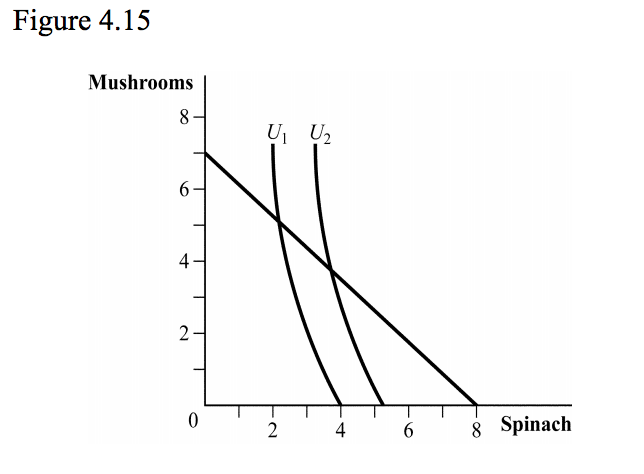
(Figure 4.15) The consumer maximizes utility by consuming:
A. 7 mushrooms and 0 units of spinach.
B. 8 units of spinach and 0 mushrooms.
C. on indifference curve U2.
D. approximately 4 mushrooms and 4 units of spinach.
B
Jenny has the “usual-shaped” downward sloping, convex indifference curves for pizza slices and sodas. The price of a pizza slice is $2 and the price of a soda is $1. In general, Jenny’s optimal consumption bundle will be one for which her marginal rate of substitution of pizza slices for sodas (the quantity of soda he is willing to trade for one more pizza slice) is equal to:
A. ½
B. 1
C. 2
D. 3
E. none of the above
C
Frank's utility function is U = 10X + 6Y. Frank has a budget of $60 to spend on goods X and Y. The price of good X is $3 and the price of good Y is $2. How many units of good X and good Y does Frank purchase?
A. X = 20 and Y = 0
B. X = 0 and Y = 30
C. X = 15 and Y = 5
D. X = 10 and Y = 20
A
When the price of the X good increases (holding everything else constant), the new budget constraint:
A. will have the same Y-intercept but will be steeper than the original budget constraint
B. will have the same Y intercept but will be flatter than the original budget constraint
C. shifts outward in a parallel fashion
D. shifts inward in a parallel fashion
A
If the consumption of good X __________________ when the price of good Y ________________, the two goods are said to be ____________________.
A. increases, increases, complements
B. increases, decreases, substitutes
C. increases, increases, substitutes
D. decreases, increases, substitutes
C
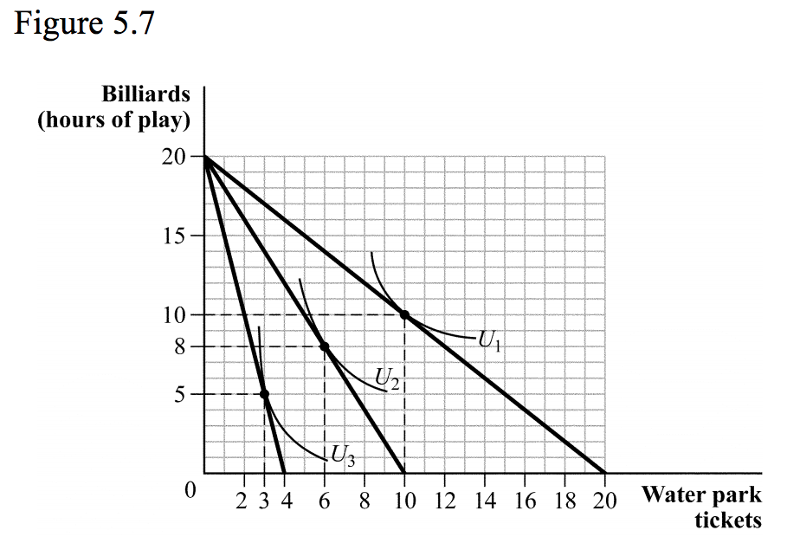
(Figure 5.7) Based on the consumer's indifference curves and budget constraints, which of the following demand curves reflects the consumer's demand for water park tickets? Assume the consumer has income of $100.
A. Demand curve A
B. Demand curve B
C. Demand curve C
D. Demand curve D
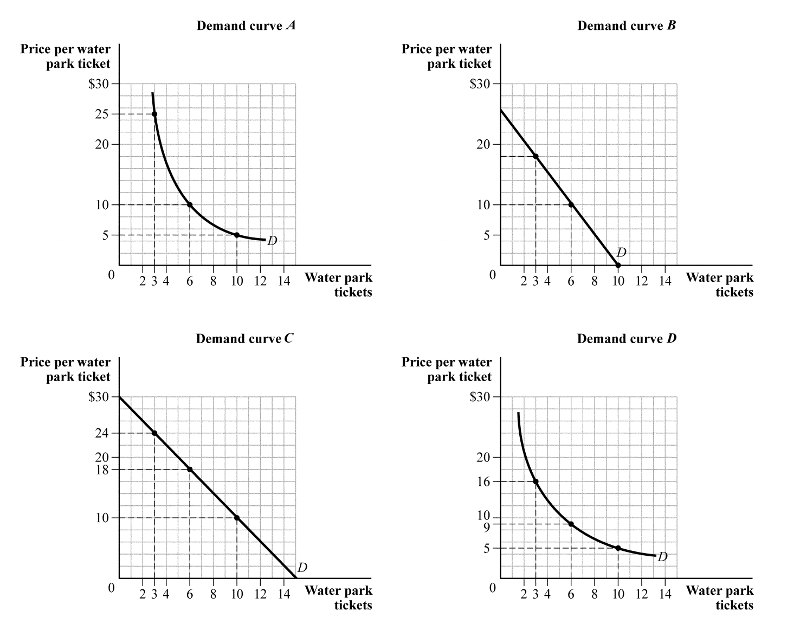
A
Which of the following is/are correct in regard to the market demand curve?
A. it is constructed by horizontally summing all of the individual demand curves for the good
B. consumer incomes and preferences are fixed along any given demand curve
C. the prices of related goods are fixed along any given demand curve
D. all of the above are correct
D
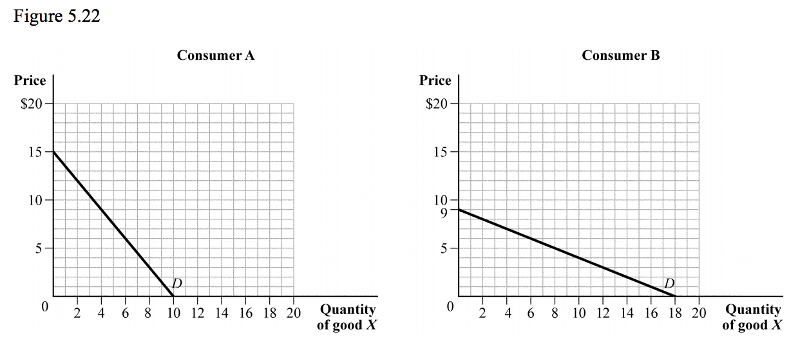
(Figure 5.22) Suppose there are only two consumers in the market for good X. The total quantity demanded in the market at a price of $3 is ______, and the total quantity demanded in the market at a price of $12 is ______.
A. 20; 2
B. 20; 5
C. 6; 3
D. 18; 0
A
Everything else equal, an increase in a consumer’s income will cause the consumer’s budget constraint to:
A. become steeper
B. become flatter
C. shift inward in a parallel fashion
D. shift outward in a parallel fashion
D
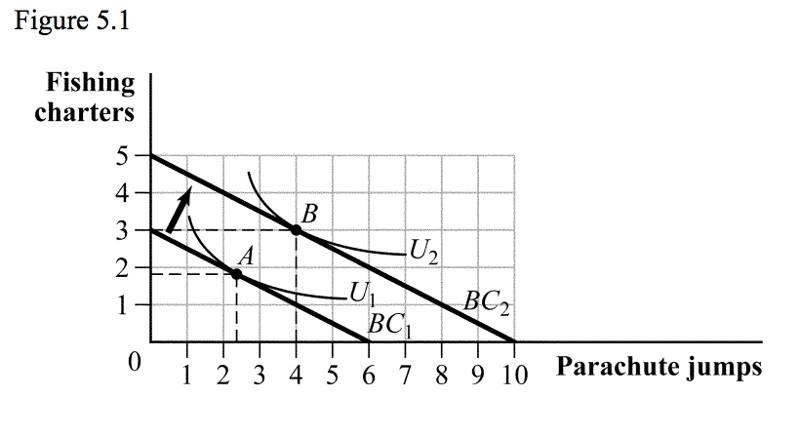
(Figure 5.1) Francis spends his income on fishing charters and jumping out of airplanes. Which of the following statements is TRUE?
A. Fishing charters are an inferior good.
B. An increase in income could cause the optimal consumption bundle to move from point A to point B.
C. Parachute jumps are an inferior good.
D. An increase in the price of parachute jumps could cause the optimal consumption bundle to move from point A to point B.
B
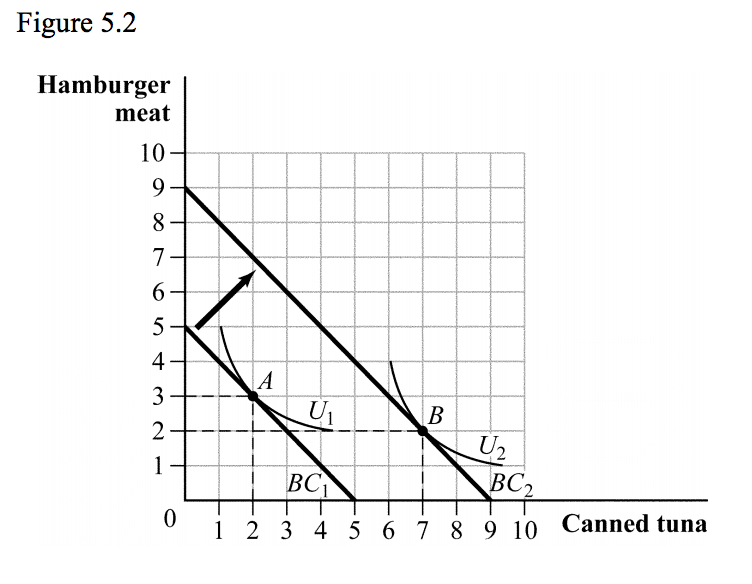
(Figure 5.2) In the figure, hamburger meat is a(n) ______ good and canned tuna is a(n) ______ good.
A. normal; normal
B. inferior; normal
C. inferior; inferior
D. normal; inferior
B
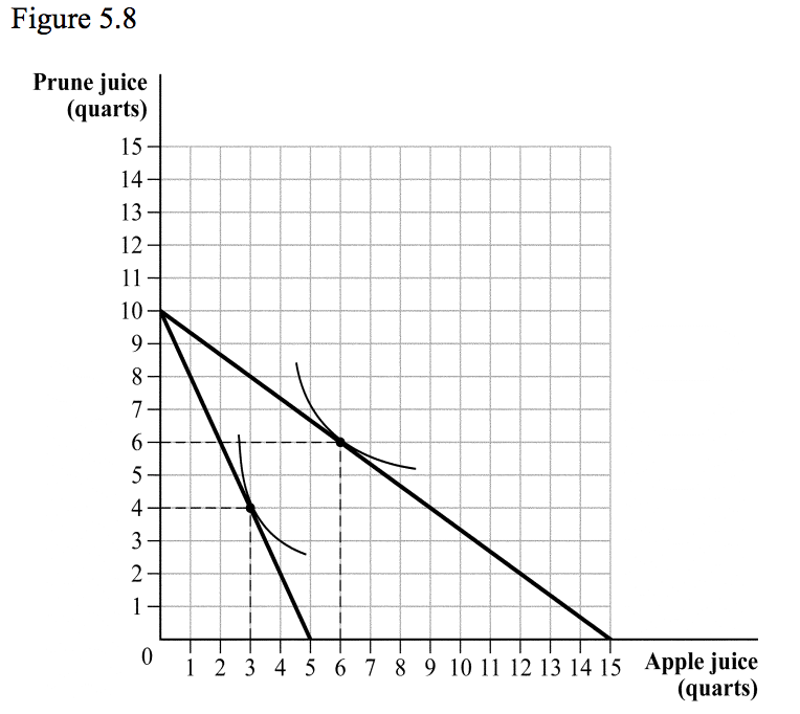
(Figure 5.8) Refer to Figure 5.8, depicting the consumer's indifference curves and budget constraints. Suppose the consumer has $20 of income to spend on apple and prune juice. Which of the following statements is TRUE?
I. At a price of $2 per quart of apple juice, the consumer buys 3 quarts of apple juice.
II. At a price of $4 per quart of apple juice, the consumer buys 3 quarts of apple juice.
III. At a price of $1.33 per quart of apple juice, the consumer buys 6 quarts of apple juice.
IV. At a price of $0.75 per quart of apple juice, the consumer buys 6 quarts of apple juice.
A. I and II
B. II and III
C. II and IV
D. I only
B
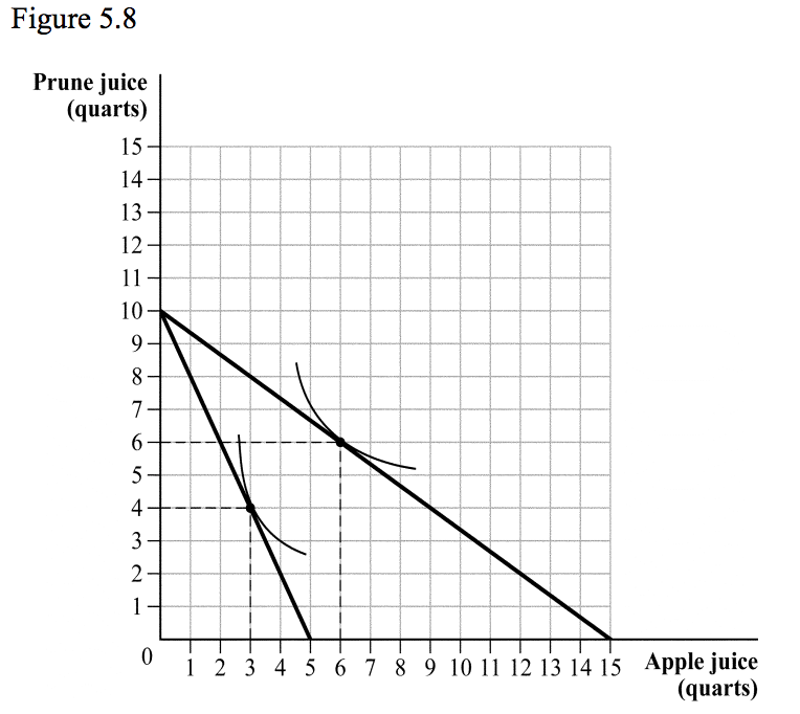
(Figure 5.8) Based only on the diagram, apple juice and prune juice are:
A. complements
B. substitutes
C. luxury goods
D. necessities
A
For ______________ goods, the substitution and income effects work in ___________________ direction(s).
A. normal, opposite
B. inferior, the same
C. Giffen, the same
D. none of the above
D
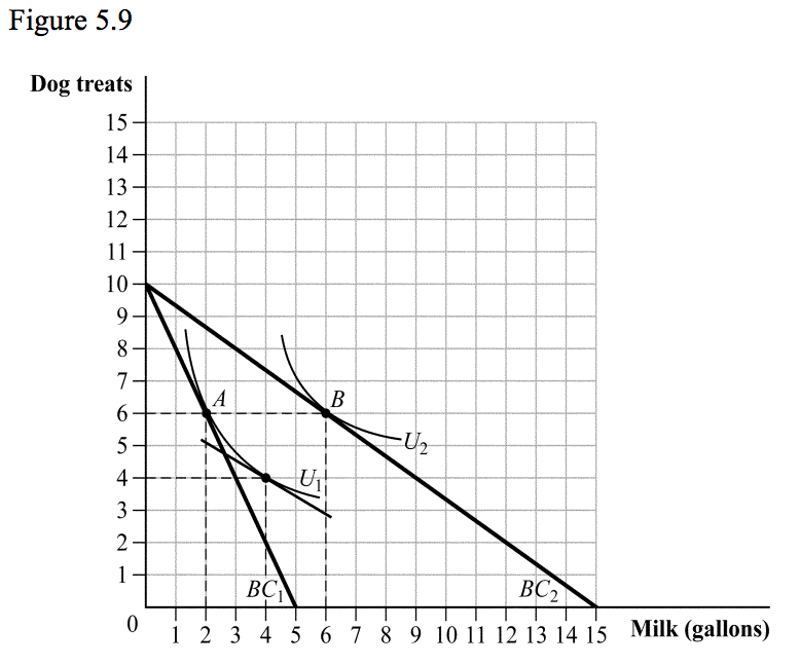
(Figure 5.9) What is the size of the substitution effect associated with the decrease in the price of milk?
A. The quantity of milk consumed increases from 2 to 6 gallons.
B. The quantity of milk consumed increases from 4 to 6 gallons.
C. The quantity of milk consumed decreases from 6 to 2 gallons.
D. The quantity of milk consumed increases from 2 to 4 gallons.
D
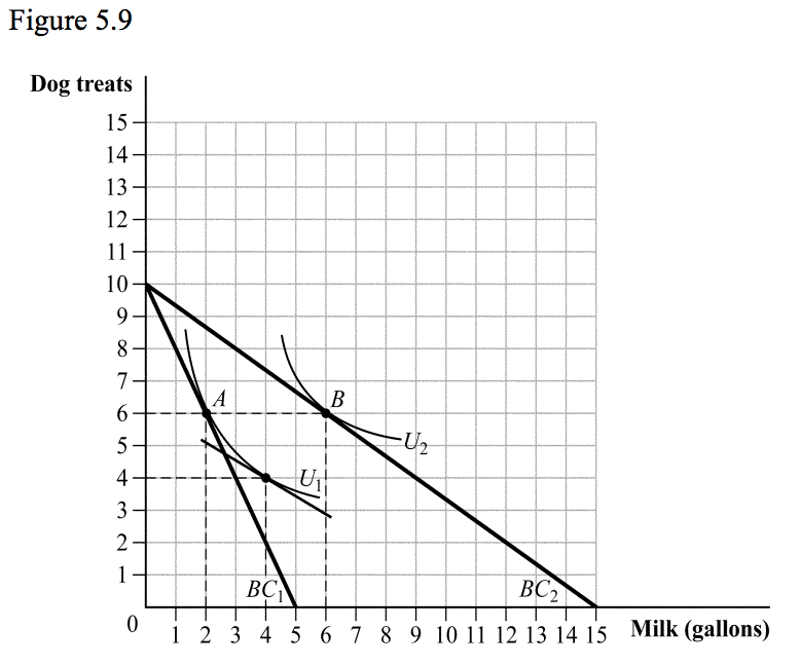
(Figure 5.9) What is the size of the income effect associated with the decrease in the price of milk?
A. The quantity of milk consumed increases from 2 to 6 gallons.
B. The quantity of milk consumed increases from 4 to 6 gallons.
C. The quantity of milk consumed decreases from 6 to 2 gallons.
D. The quantity of milk consumed increases from 2 to 4 gallons.
B
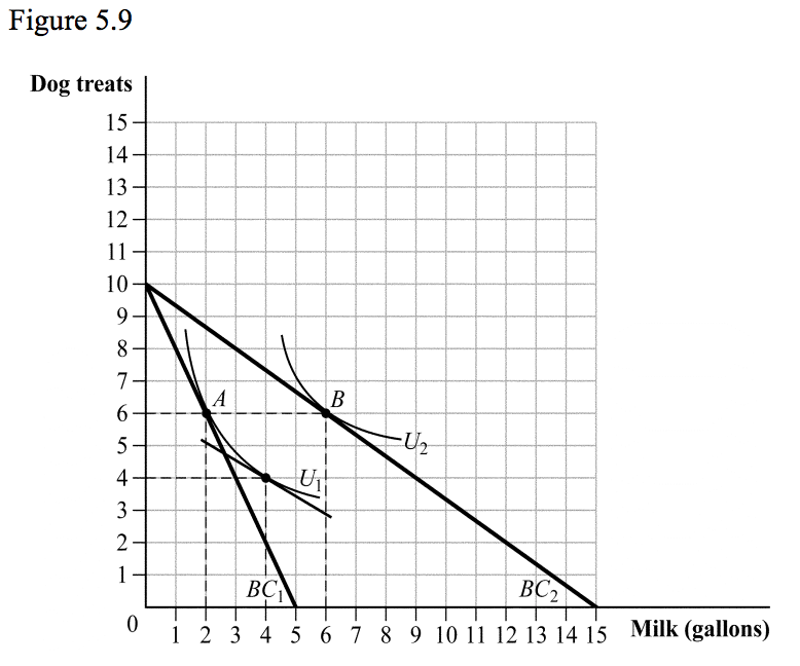
(Figure 5.9) Based only on the diagram, milk is a(n) ______ good, and dog treats is a(n) ______ good.
A. normal; inferior
B. normal; normal
C. inferior; inferior
D. inferior; normal
B
Suppose two goods, coffee and creamer, provide the consumer with utility, but only if they are consumed in fixed proportions. An increase in the price of coffee will yield:
A. A substitution effect and an income effect in opposite directions
B. A substitution effect and an income effect in the same direction
C. An income effect, but no substitution effect
D. A substitution effect, but no income effect
C